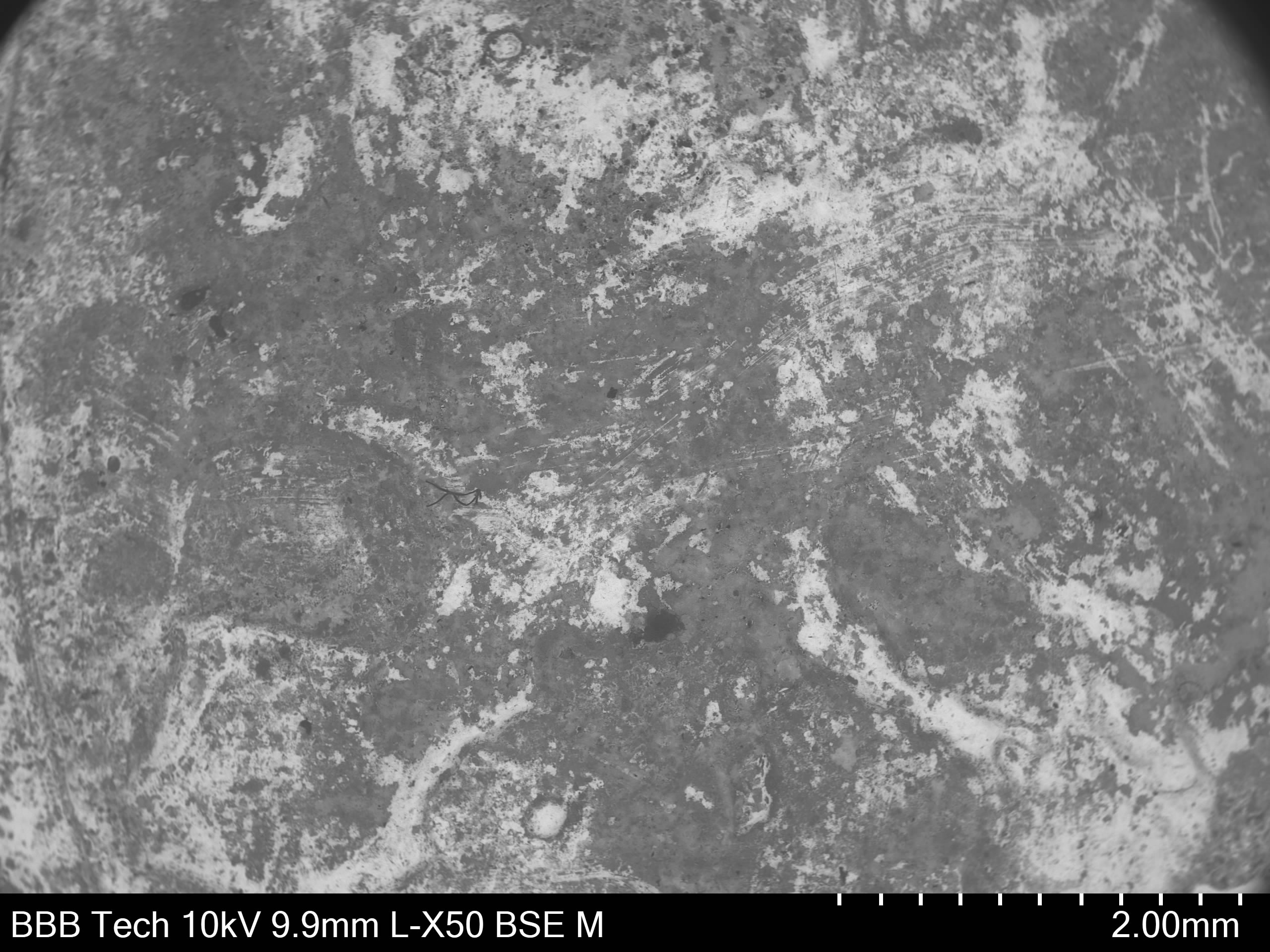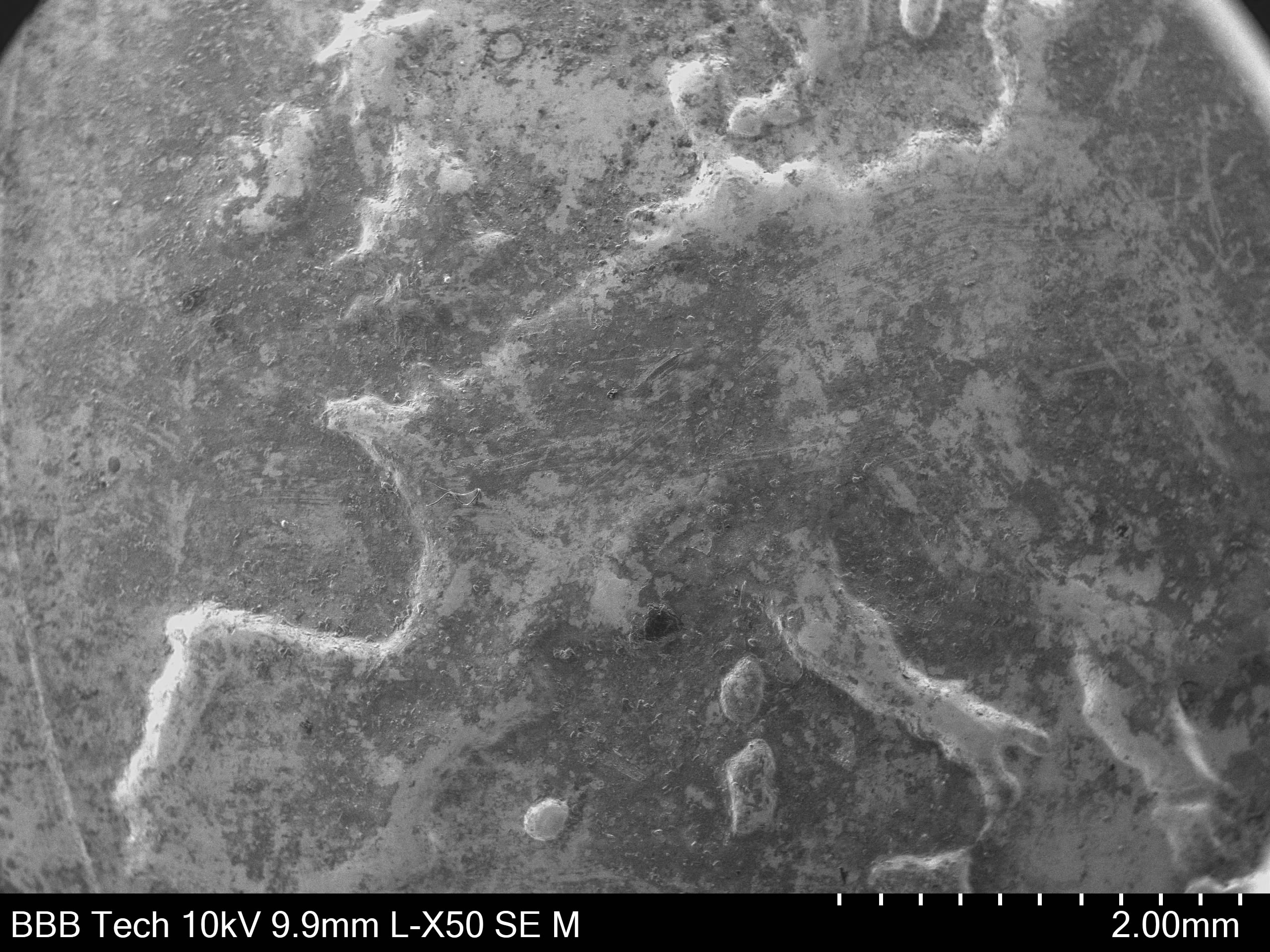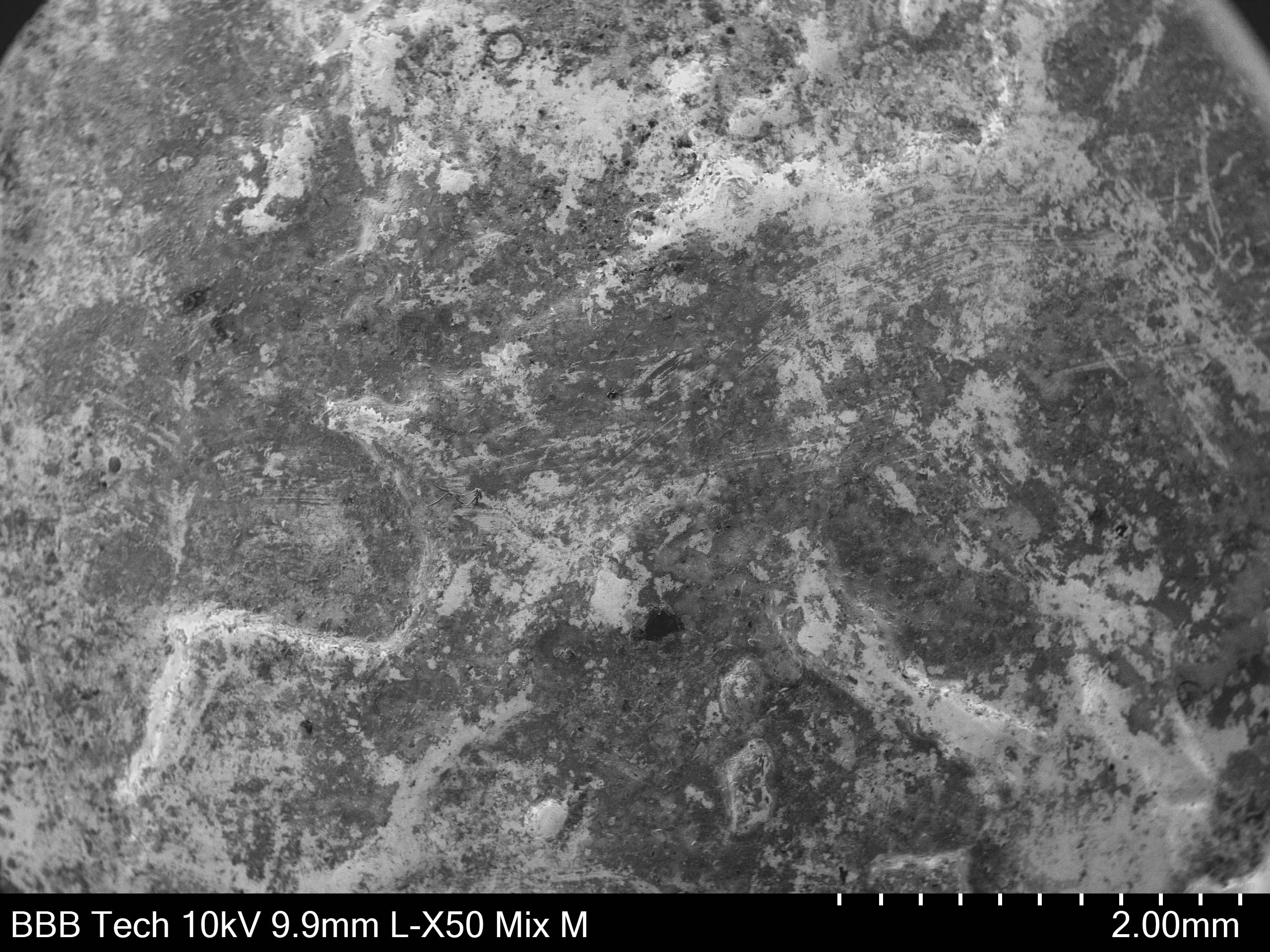In the investigation of the failure of materials and in materials analysis, we use several analytical methodologies to elucidate facts. One method which we have previously, discussed, is Scanning Electron Microscopy (SEM). SEM is an incredibly powerful tool for any forensic materials engineer, which offers our scientists a method to capture in intimate detail, high resolution photographs at high magnification. SEM can be used in many subtly different ways, and today we will discuss one of those: the viewing modes.
To understand viewing modes, we first need to understand the basics of how SEM works. Essentially, a beam of electrons is generated and shot at the sample, scanning back and forth over the surface. Our Hitachi TM4000Plus SEM has three different viewing modes:
- BSE (Back Scattered Electrons)
- SE (Secondary Electrons)
- Mixed
The effects of the different viewing modes can be seen through the photographs below, which all depict the same surface.




